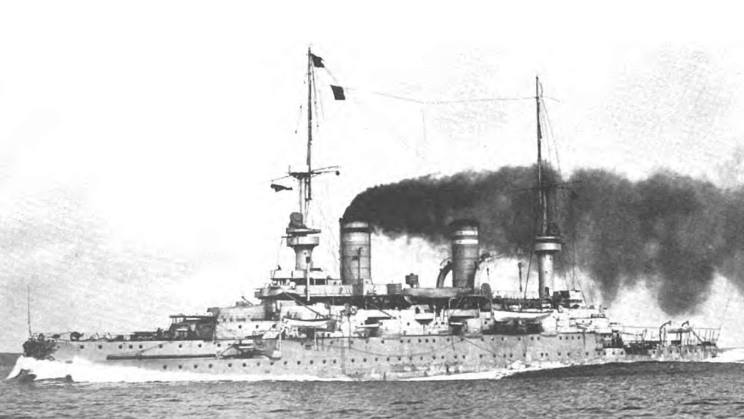German Pre-Dreadnought Battleship SMS Kaiser Karl der Grosse
SMS Kaiser Karl der Grosse was the fourth ship of the Kaiser Friedrich III-class of pre-dreadnought battleships (along with her sisters SMS Kaiser Friedrich III, SMS Kaiser Wilhelm II, SMS Kaiser Wilhelm der Grosse and SMS Kaiser Barbarossa) built for the Imperial German Navy (Kaiserliche Marine) during the naval build-up of the late 19th century. She was named after Charlemagne (Karl der Große), the medieval Frankish emperor.
SMS Kaiser Karl der Grosse was laid down at the Blohm & Voss shipyard in Hamburg in 1898. She was launched on 18 October 1899 and commissioned into the fleet on 4 February 1902.
Alongside her sister ships, she participated in annual fleet manoeuvres, training exercises, and goodwill visits to foreign ports.
Although powerful at the time of commissioning, her design was quickly rendered outdated by rapid technological advances, especially the 1906 debut of HMS Dreadnought, which introduced the all-big-gun concept and turbine propulsion.
By the end of the first decade of the 20th century, Kaiser Karl der Grosse was relegated to secondary duties and training roles, as newer, more advanced battleships entered service.
World War I
When World War I broke out in 1914, Kaiser Karl der Grosse was reactivated and assigned to the V Battle Squadron (V. Geschwader), consisting of older pre-dreadnoughts. However, she saw no frontline combat, as these ships were considered too slow and vulnerable for operations in the North Sea against the British Grand Fleet.
By 1915, she had been disarmed and repurposed for auxiliary duties, including service as a harbor ship and accommodation vessel, stationed at Wilhelmshaven and later Kiel. She remained in this support capacity through the remainder of the war.
After Germany’s defeat, Kaiser Karl der Grosse was stricken from the naval register in 1920, in accordance with the Treaty of Versailles, and sold for scrap in 1921.
| Displacement | Normal: 11,097 t (10,922 long tons) Full load: 11,785 t (11,599 long tons) |
| Length | 125.3 m (411 ft 1 in) |
| Beam | 20.4 m (66 ft 11 in) |
| Draft | 7.89 m (25 ft 11 in) |
| Installed power | 12 × water-tube boilers 13,000 PS (12,820 ihp; 9,560 kW) |
| Propulsion | 3 × triple-expansion steam engines 3 × screw propellers |
| Speed | 17.5 knots (32.4 km/h; 20.1 mph) |
| Range | 3,420 nmi (6,330 km; 3,940 mi) at 10 knots (19 km/h; 12 mph) |
| Complement | 39 officers 612 enlisted |
| Armament | 4 × 24 cm (9.4 in) 40 cal guns 18 × 15 cm (5.9 in) SK L/40 guns 12 × 8.8 cm (3.5 in) SK L/30 guns 12 × 3.7 cm (1.5 in) machine cannon 6 × 45 cm (17.7 in) torpedo tubes |
| Armor | Belt: 300 to 150 mm (11.8 to 5.9 in) Deck: 65 mm (2.6 in) Conning Tower: 250 mm (9.8 in) Turrets: 250 mm Casemates: 150 mm |




